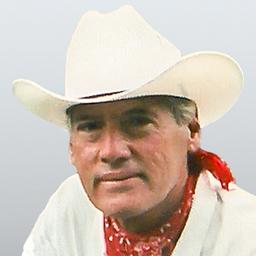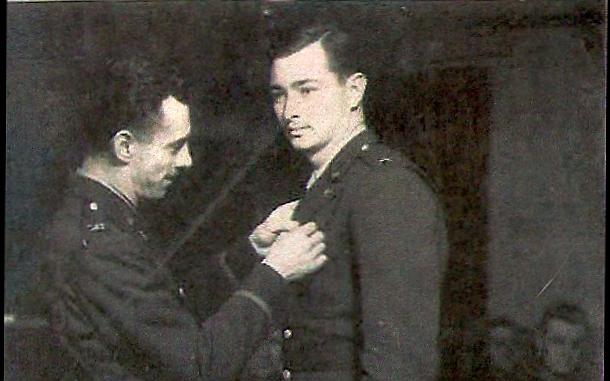It didn’t start out big. “My grandmother and grandfather came from Czechoslovakia. My great grandmother Anna Pesa Vojta arrived from Morovia in 1876. Grandmother Frances Kalda Vojta came with her family recipes and passed them to her son Frank who passed them on to me. They settled in north-central South Dakota in 1878. I remember this old sod house,” Ralph Vojta said. At 76, he is the patron of the Vojta family. “My Dad was born in 1895. That’s him holding the horse. That’s my uncle riding the first bike in South Dakota.” The old black and white photographs he held up were reminiscent of pioneer life in Dakota Territory.
The Vojta family were hosting a wine tasting in a comfortable room lined with oak casks above the retail store and tasting room. Their winery is snuggled on a little hill, built into a mountain on Highway 385 just north of Hill City. Arbors form a shaded patio where visitors can order pizza, salads and either buy their own bottle of wine or order it by the glass. The veranda is planted with flowers and might be a scene from an intimate Alpine restaurant in Europe.
The food looked delicious, tastefully served under the arbors. Décor inside just as inviting but what about South Dakota wine? It is a land of sprawling prairies, windswept farms that seem to go on forever and here in the Black Hills of mountain peaks and jagged rocks. Tourists come to see faces of presidents carved on Mt. Rushmore, the image of Crazy Horse emerging from granite, buffalo and wild horses. The wine looked good, savory. One table ordered white. Glasses were translucent with fine mist where the chilled liquid met a warm breeze on this late fall afternoon.
“Our family brought this idea over from Checkslovakia. Our women made wine. We picked choke cherries, wild grapes, plums. We took ‘em into grandma. What she did I don’t know. Everything that we had came over with those people. Everything they knew was lost with those people.” Ralph Vojta became sentimental. Photographs of his family were enlarged in the upstairs room. It was as though he was remembering days from his childhood of long ago.
They were a proud people. While elders gathered in a room to talk in their native tongue the strict rule was “We speak English. We American. So I speak no Check.”
“About 50 years ago I began making wine. I have a granddaughter, Sandi. She started following me around picking berries. I made the wine in my basement with Sandi as my assistant. I’m making wine legally in my basement since I’m not selling it. It cost me $5,000 a year, but I can’t sell it. I'd travel to Minneapolis to buy supplies. Matt met Sandi in Brookings. They came back through and stopped by this old house of mine. Matt said we should start a winery.” In 1996, South Dakota changed the law so that farm wineries could make and sell wine within the state.
The Vojta story was interrupted by dry white crab apple wine. The wood table was lined with bottles, sparkling long stemmed glasses and a plate of goat cheese, nuts, figs, cranberries and dried cherries. Even if you were not hungry or thirsty the appealing layout created an atmosphere in the cask lined room.
“Matt and Sandi married. They went into the Peace Corps to Tanzanaia. They wanted to split them up. So they came back after two weeks. We applied for a wine making license and got Number 2 in South Dakota. We re-did my basement.” It is a family tale. As the crab apple wine was sipped it unfolded with good humor and description of enterprise. “I could pick 40 gallons of choke cherries in a morning.”
A sweet red wine had a strange name. When asked how Red Ass Rhubarb came about, Ralph Vojta laughed. “We were moving from our old place up here. Sandi and I were doing the last thing on a tank. We were ready to move. We were blending from raspberry to rhubarb. In that freezer at the other place I had a 5 gallon can berry juice. All the cans looked alike. I started pouring it. Sandi called out, ‘Dad what are you doing?’ I looked, put my head down and said, ‘I feel like a red ass.’ That’s it. My face turned red. Sandi had to resubmit the formula, redo the label then looked for a donkey to put on it.”
Prairie Berry labels are very cool. People buy books based on cover appeal and no doubt many buy their wines to take home as gifts because of the unique names and eye-catching labels. Poker Face with an image of Deadwood’s notorious granny gambler Poker Face Alice Ivers Tubbs is one. Calamity Jane, a very sweet red wine, another. There is also 3 Rednecks, a fairly dry red.
South Dakota only has a 3-month grape season. Wild grapes are very much in demand by wineries as well as for non-commercial home wine making. The mountains abound with berries and fruit is plentiful. “Everything that is negative we turn into a positive. There is not a lazy one here. Money is not my bag, never has been but we need it to operate. I say open this door and come in and have fun.” Ralph Vojta means what he says. Prairie Berry is a place to come and enjoy old-world hospitality and sample good wines.
“My favorite red wine is wild grape. They are picking in the Badlands now. I have 5 bottles and you have none.” The smile on his face belied his good nature and love of good wine. It is difficult to get wild grapes thus no Claim Jumper was available in the retail store. Phat Hogg red, Pheasant Reserve and 3 Rednecks were, however.
What monikers. Phat Hogg red was savory and bold. The Phat Hogg Chardonnay: white, dry and tart, as good as any California Chardonnay. A sharp dry white called St. Pepin is made from a hybrid South Dakota grape from the Yankton area. Pink Slip, a semi-sweet blush wine, is made of 44% hybrid Steuben grape and 56% white Zinfandel grape. A sweet cranberry wine is made 100% from cranberries while the now infamous Red Ass Rhubarb contains 10% raspberry and 90% rhubarb.
“We import grapes from California. Grapes are grown in South Dakota but it is cold here with a short growing season. There are 5 varieties of SD grapes. They started with California grapes and were bred at the University of Minnesota.” Matt Keck explained. He was standing at a modern grape de-stemmer. “Chokecherries are picked clean of the stem. Grapes must have the stems taken off.”
“Tomorrow we are going to press black currant. We have 17,000 pounds of black currant in that tank and tomorrow we will press the wine out of them,” Sandi Vojta said.
Matt moved to their modern bottling machine on the wine making floor. We can do 2,000 bottles an hour with screw caps.” This is a universal issue in wine making. It costs a great deal more to put wine in screw cap bottles than to cork it. Corking is classical but leads to taint and contamination of wines. By force of old habits most people associate screw caps with cheap or inferior wines. That is not the case.
“We used to use corks. Sandi did all the corking. She would do 500 with one arm and 500 with the other. On a good day we could do 2,000. We can do that in an hour. In the old location our furnace room doubled as our bottling room. We started with corks, then synthetic cork. When cork is sterilized it can contaminate the wine. There is TCA, a mold that can contaminate the wine from cork. We found 10% of wine is affected. In a case of wine 1 of 12 bottles contain TCA and smell of musty basement, wet dog, moldy cardboard. Those are all descriptions given of wine contaminated with TCA. It’s the cork’s fault. In the auto industry they wouldn’t tolerate a 10% failure. We made the decision when we moved and came up here to go to screw caps. It is best for the wine. It is more convenient for storage. Corked wine has to be stored on its side to keep the cork wet and expanded. This is more expensive than a cork bottle and the machinery is more expensive. Five years ago it was deliberated since red wines age. Now screw caps are accepted,” Matt explained.
The modern plant is a far cry from the 65-gallon plastic tank the Vojta family started with. “We have 6 stainless steel tanks that hold 10,563 gallons each. Sandi understands what the wine is thinking,” Matt smiled as he walked past the large tanks. “Fall is the crush season. It’s when the grapes come in. We are in between South Dakota and California harvest. We store South Dakota grapes in oak barrels.”
When asked what they do with the pressings, Sandi replied that they compost everything. “Now there are some very happy bears out there.” She laughed, her grandfather’s good sense of humor evident.
“Not all wine goes into oak barrels. It gives it a flavor. Sandi makes the decision what goes into oak. Some stays in oak 18 months,” Matt added.
Prairie Berry began as a commercial venture in 1998. They moved to the present location in Hill City in 2004. While they are a relatively new winery, a show case in the tasting room attests to many medals and awards their vintages have earned. While some of their wines are sold in liquor stores most sales are made though their retail store after tasting. Alcohol by volume runs 10%.
“Grandmother made wine out of whatever she had,” Ralph Vojta said. He sipped pensively of the crab apple white remembering the sod house homestead near Mound City.
For more information visit their website at http://www.prairieberry.com or call them toll-free at 1-877-226-9453.





